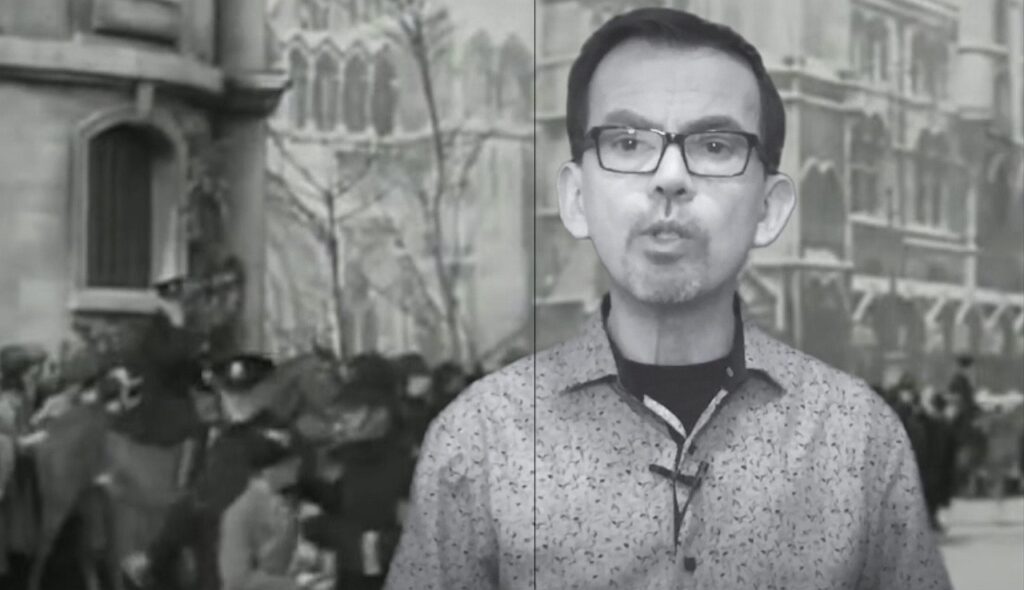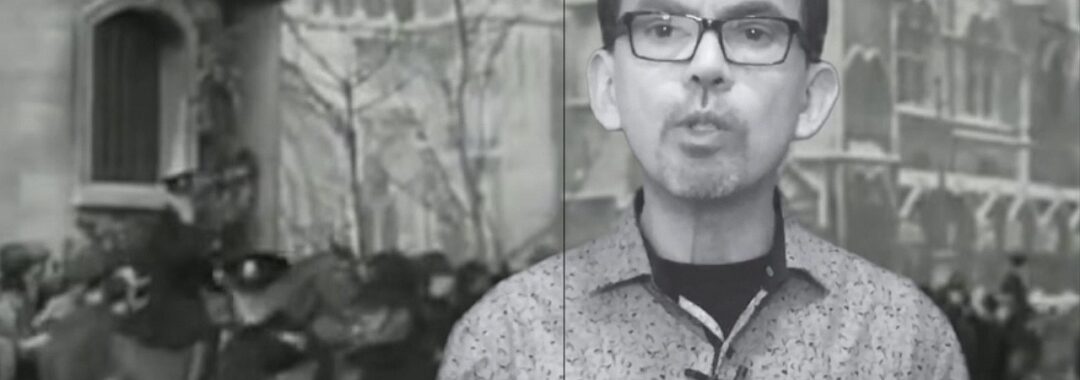If you’re looking to get your audience’s attention, one of the best ways to do it is to add suspense to your story.

Click here to check out the video or you can continue reading
Many people confuse the idea suspense with surprise. Here’s the difference between the two, as well as the biggest tip on how to add suspense to your story.
Suspense vs. Surprise
Surprise is when something dramatic happens in your story without warning. Not only is the audience surprised but the character in the story is surprised at the same time.
Let’s contrast this with the idea of suspense. In suspense, you let the audience know of a danger that character IN the story doesn’t realize yet. This makes every small moment in that scene dramatic, because the audience knows that the stakes are high – and THIS GRABS PEOPLE’S ATTENTION.
So let me give you an example from film and then talk about how you could use this yourself if you’re telling a story from a stage or just to a friend.
How Alfred Hitchcock built suspense
The original master of suspense in modern film is Alfred Hitchcock. In a famous early film, called Sabotage, he had a scene where a boy takes a package on a bus. No one in the scene realized that IN that package is a bomb.
So Hitchcock could have simply shown the bomb blow up, which would have surprised us just as much as the characters. But instead, he lets the audience know about the bomb. That makes the next five minutes in the scene full of drama. Every mundane moment is drawn out and heightened, pulling every single audience member into the story so that we’re all paying attention when the bomb actually goes off.
In this case, suspense is much more effective than surprise.
So how can you use suspense when you’re telling your story?
Let’s say you’re telling a story about being in line for a show on a cold night when someone suddenly butts in line in front of you. Words are exchanged, tension rises, maybe tempers start to get hot. And imagine that after this exchange, someone comes up up to you and tells you the person you were arguing with is a former Mixed Martial Arts Champion with a reputation for assaulting strangers.
Whew. That’s quite the story, especially this surprise at the end.But imagine how much better it would be if you let your audience KNOW this crucial piece of information at the BEGINNING of the story – even when you’re still unaware of it.
Every small event in that scene will be heightened in the audiences mind because THEY’RE aware of a danger that you’re not.
How to introduce suspense
So how do you do it? It’s simple. You could say something like. “It’s a freezing night and suddenly this little guy butts in front of me. Now I’m not in the mood to take any rudeness from anyone. So I’m going to tell this guy off. What I don’t realize is this seemingly harmless little guy is actually a champion MMA fighter with a violent temper and reputation for assault.”
Now when you set up a scene like THAT. Your audience is going to lean in and magnify every detail. And getting your audience’s attention is the key to delivering your message.
So the next time you tell YOUR story, think about where YOU can add suspense.
For more storytelling tips you can subscribe to my Youtube channel. You can also download my professional storytelling tool and other resources here.
